Este post também está disponível em:
Português
English
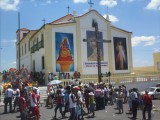
The city of Candeias in the Baia de Todos os Santos attracts thousands of faithful and revelers every year in the religious festival of Nossa Senhora de Candeias, is a mixture of sacred and profane, watered with much joy and animation.
The colonization of the region where Candeias is located today began in the 16th century, from the sesmarias that originated the engenho de Matoim, owned by the Antunes family, and the engenhos do Caboto and Freguesia.
All suffered major setbacks when the Dutch invaded and set fire to the plantations.
The town was founded around 1640, when Jesuits set up the Pitanga Mill and built a chapel in praise of the Virgin Mary. At that time, news spread that a blind woman had regained her sight after bathing in the waters of a stream near the priests’ mill.
See the map of Baía de Todos os Santos.
The supposed miracle attracted many people and the village grew around the stream which, after being canalized, became the Fonte dos Milagres. The expansion of the chapel gave rise to the Mother Church of Our Lady of Candeias.
The place became known as Candeias, a place of religiosity and pilgrimages, with a population made up mainly of artisans and santeiros, a picture that remained unchanged over the following centuries.
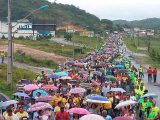
From 1941, with the discovery of oil wells, the presence of Petrobras in the region changed the profile of the village.
The offer of jobs made the population increase enough for the village to gain the status of emancipated municipality in 1958.
Like the other cities of the Recôncavo, Candeias retains remnants of colonization. Its festivals attract crowds.
Video about Candeias BA
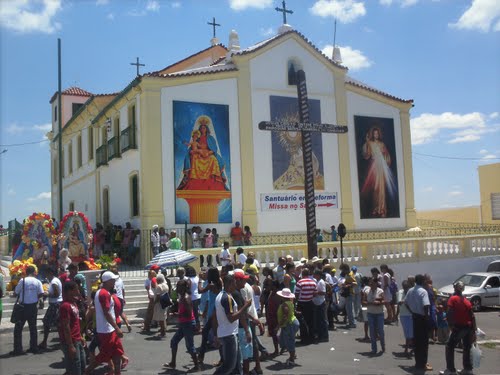
Candeias na Bahia
Tourist Spots and History of Candeias BA
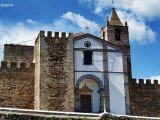
1. Igreja Matriz Nossa Senhora das Candeias
The church, built in 1894, belongs to the Franciscan Friars Minor. Our Lady of Candeias, related to fertility. purification by water, illumination by fire and the cult of Iemanjá, is celebrated on February 2 along with the carnival cry.
The religious festival of Nossa Senhora das Candeias, which has its high point on February 2, attracts thousands of faithful and revelers every year, in a mixture of sacred and profane, watered with much joy and animation.
The festivities are also famous in the local Micareta, to the sound of electric trios.
2. Central de Abastecimento de Candeias
The popular food market also sells handicrafts. The place is nice to know the gastronomic particularities of the place and to find an original gift.
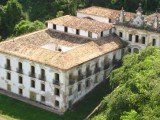
3. Engenho da Freguesia – Wanderley de Pinho Museum
The listed architectural complex is also known as Engenho da Fábrica, because in addition to the big house, slave quarters and chapel, which were built according to 18th-century models, it also housed a sugar factory.
The mill belonged to the Baron of Cotegipe (1815-1889) and was inherited by his grandson, José Wanderley de Araújo Pinho, patron of the museum that now operates there, whose collection consists of paintings, sculptures, porcelain, furniture and machinery used in farming.
It is located in the Bay of Aratu. in the middle of the Atlantic Forest, in the environmental preservation area.
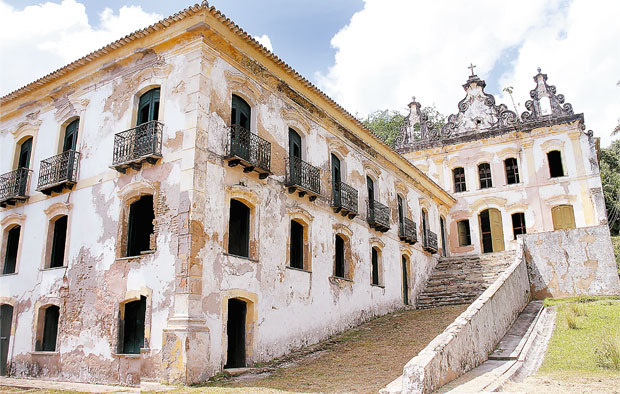
História do Museu Wanderley Pinho em Candeias BA
4. Fountain of Miracles and Santuário Nossa Senhora das Candeias
Near the fountain there is a great movement of pilgrims who arrive to pay their promises. There is a room for ex-votos and, in the surroundings, trade in religious articles.
5. Engenho do Matoim
The first constructions of a large house, a slave quarters and a church were made by the Antunes family, who were granted the sesmaria in 1584. This family of New Christians was the target of the Inquisition between 1591 and 1595.
According to Angelo Adriano Faria de Assis, a researcher at the Fluminense Federal University, in the Revista Brasileira de História (2002), Heitor Antunes maintained a clandestine synagogue on the premises of the mill.
When he died, his wife Ana Rodrigues buried him according to Jewish rituals, an act that led her to prison, where the already octogenarian lady died. Even after her death, she was tried and condemned by the Tribunal of the Holy Office.
The mill was destroyed by the Dutch in 1624 and rebuilt in the 18th century by the Rocha Pitta family. The townhouse and the chapel that remained of the property, now listed, are open to visitors.
6. Igreja de Nossa Senhora da Encarnação de Passé
Located on a natural viewpoint overlooking the Bay of All Saints, this 17th-century temple, now in ruins, is considered one of the largest and oldest in Bahia.
Bahia.ws is the largest tourism and travel guide for Bahia and Salvador.



















